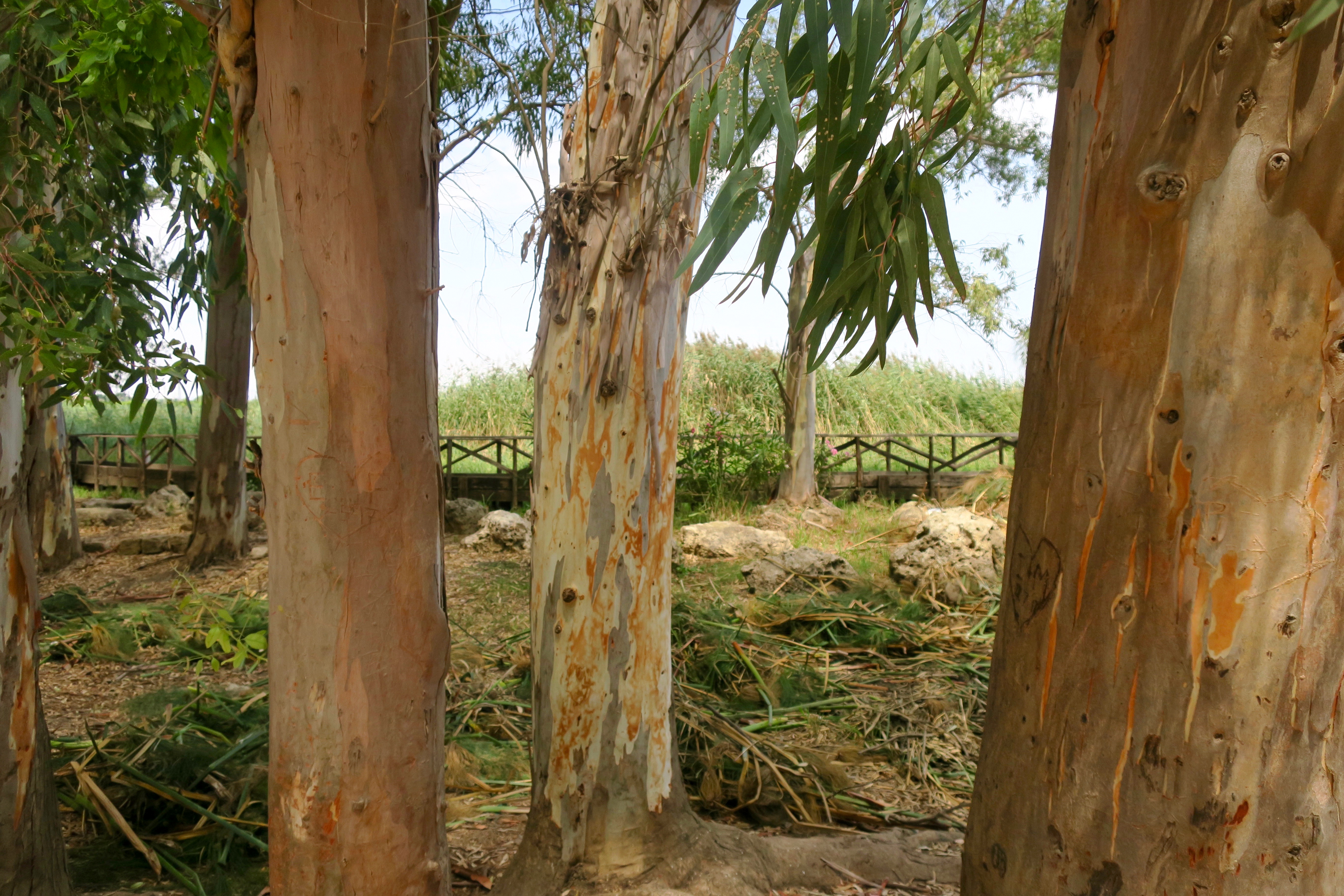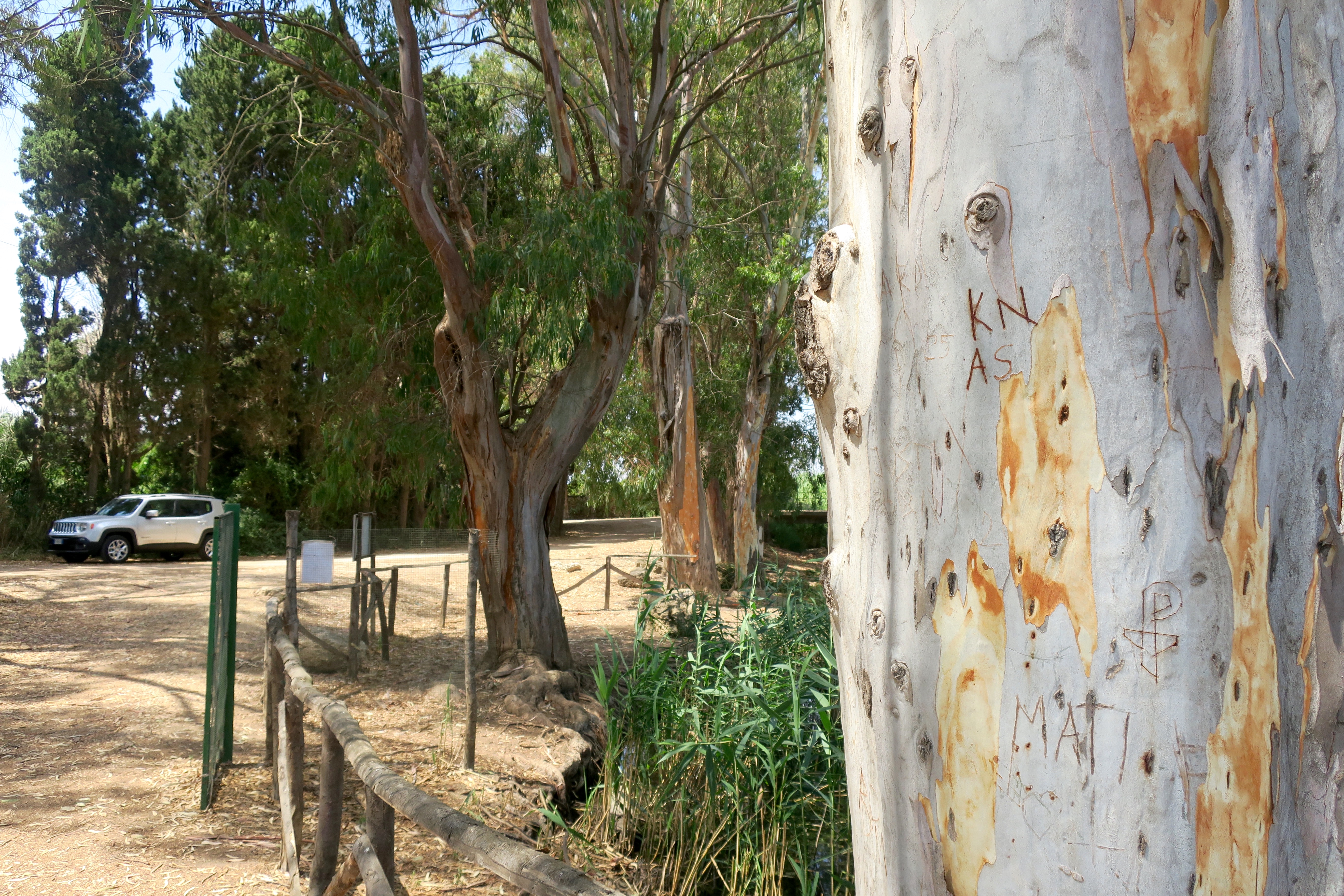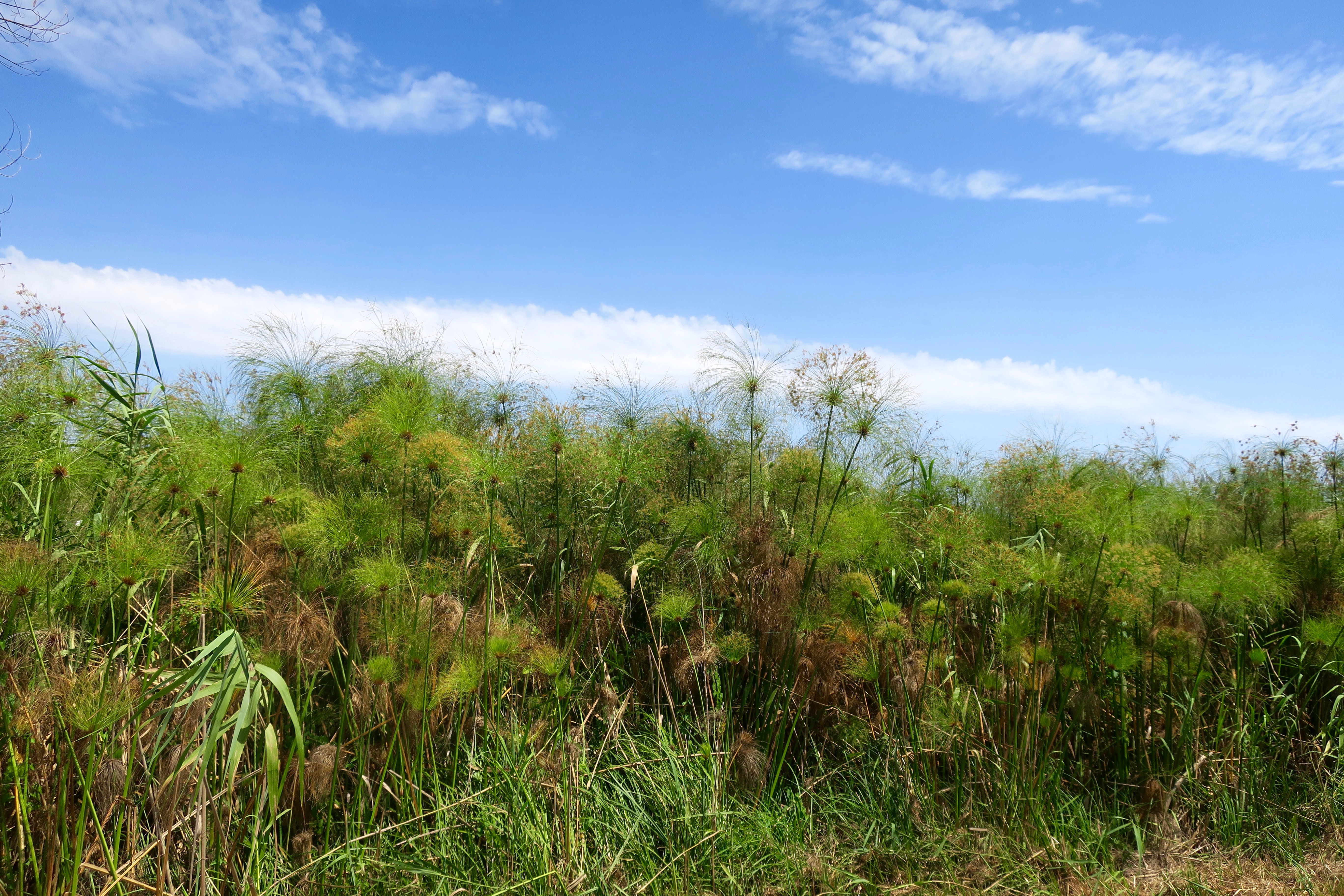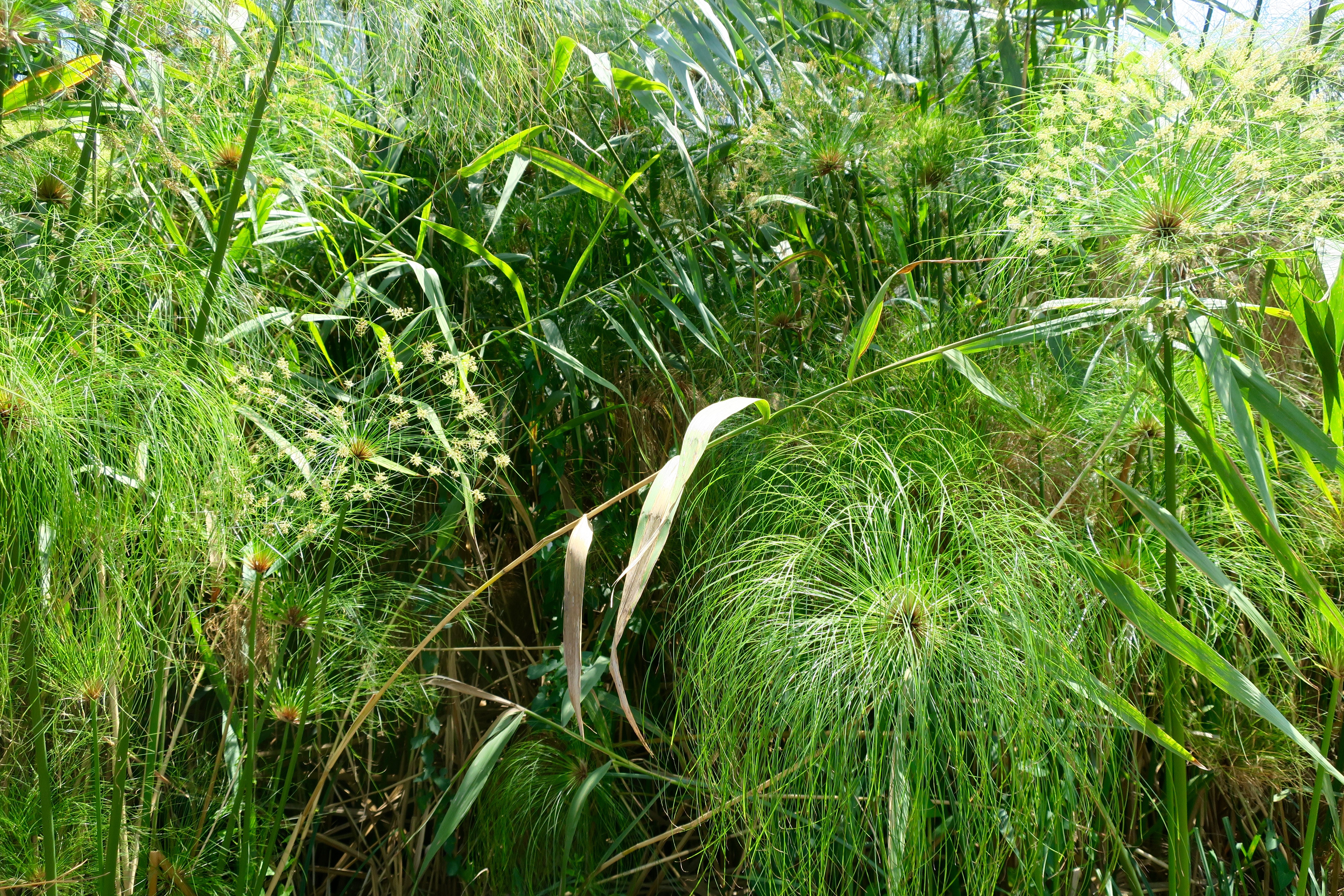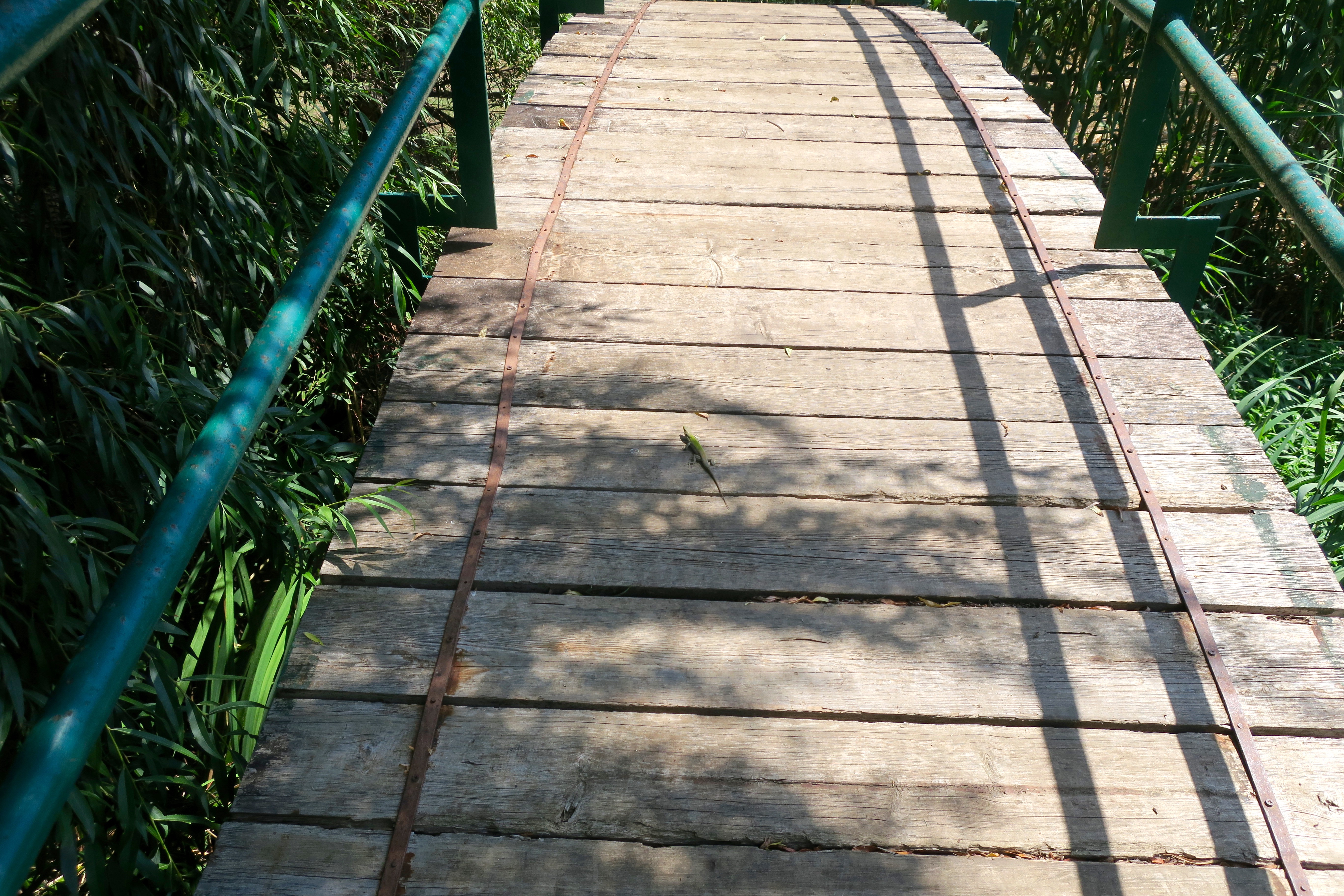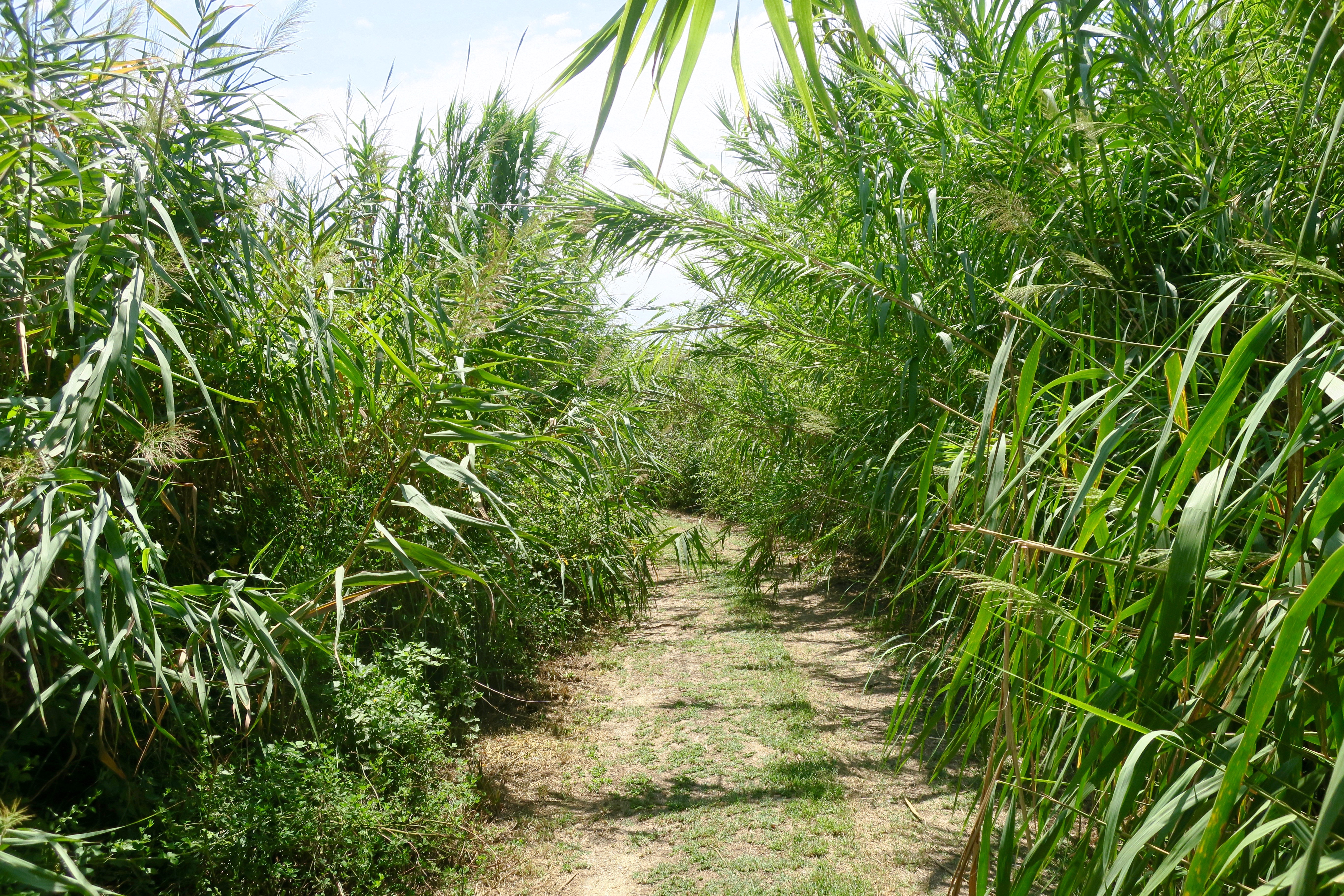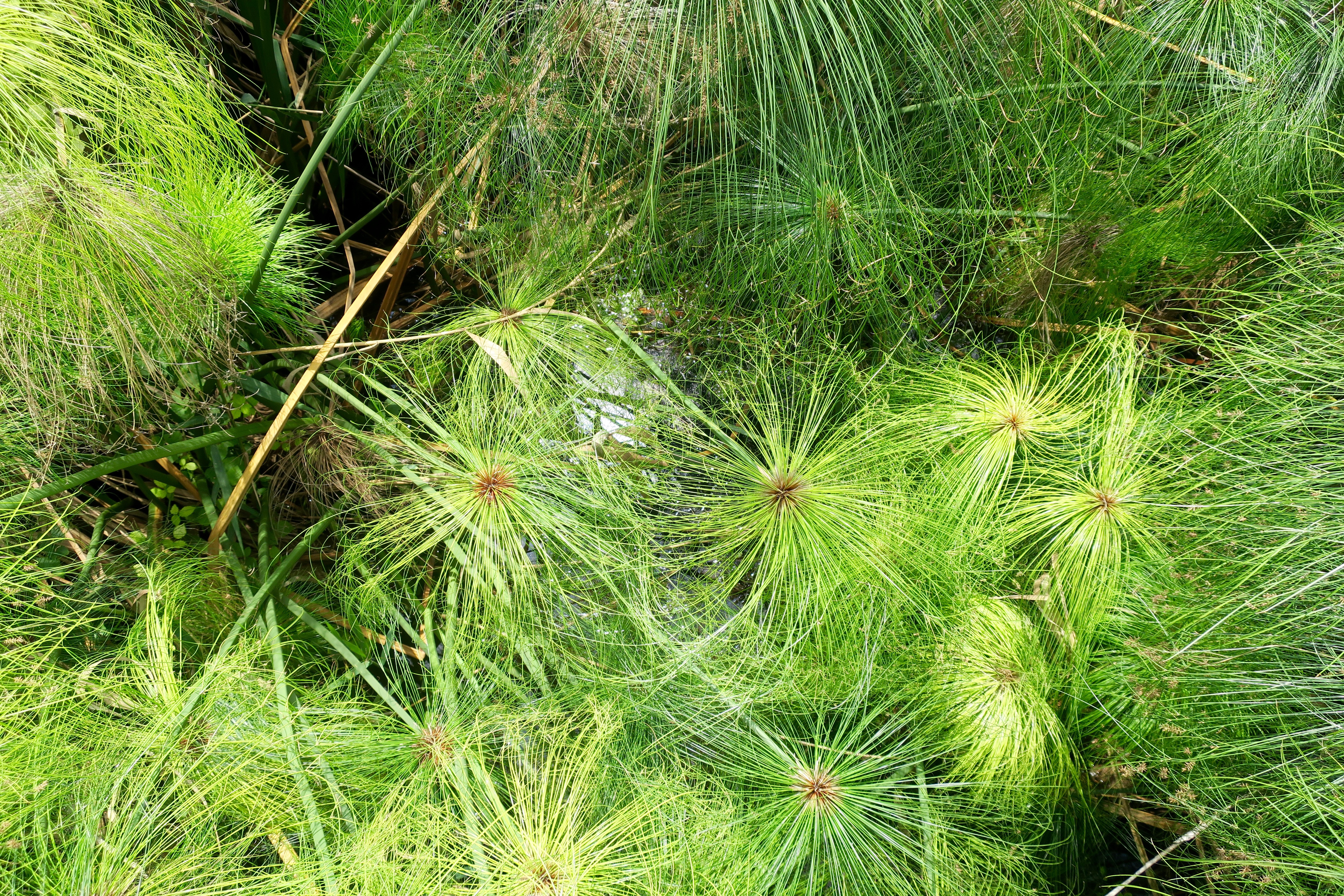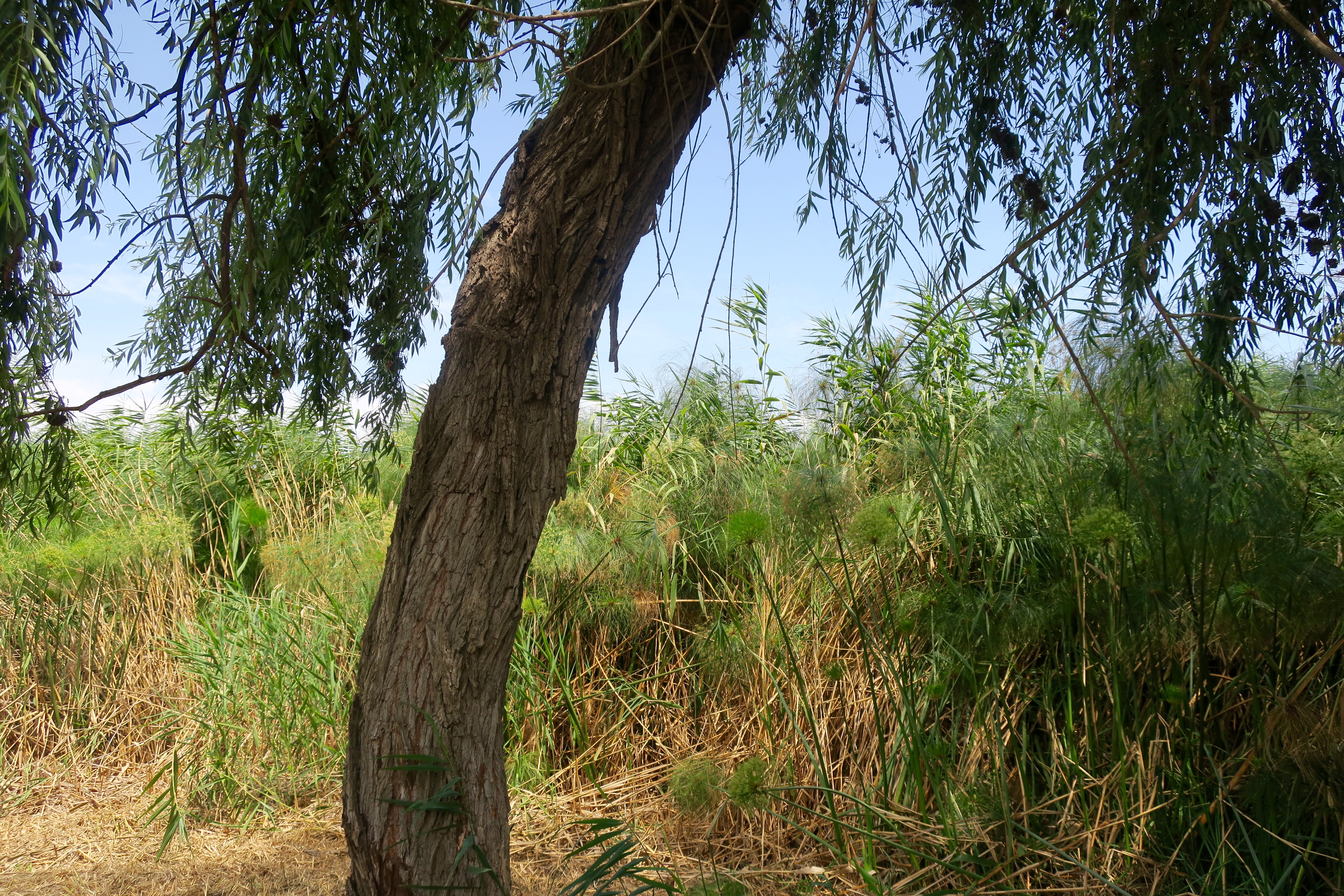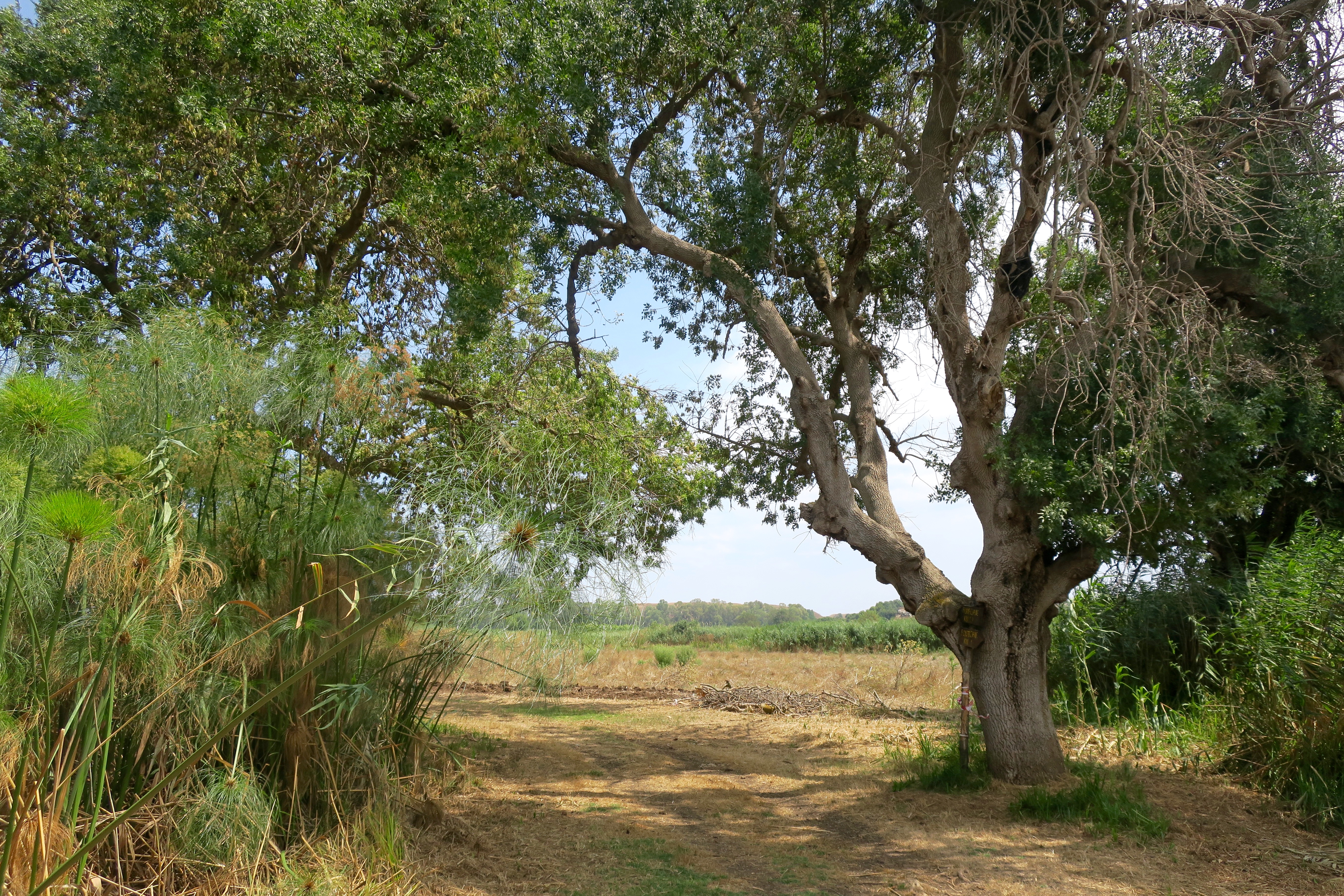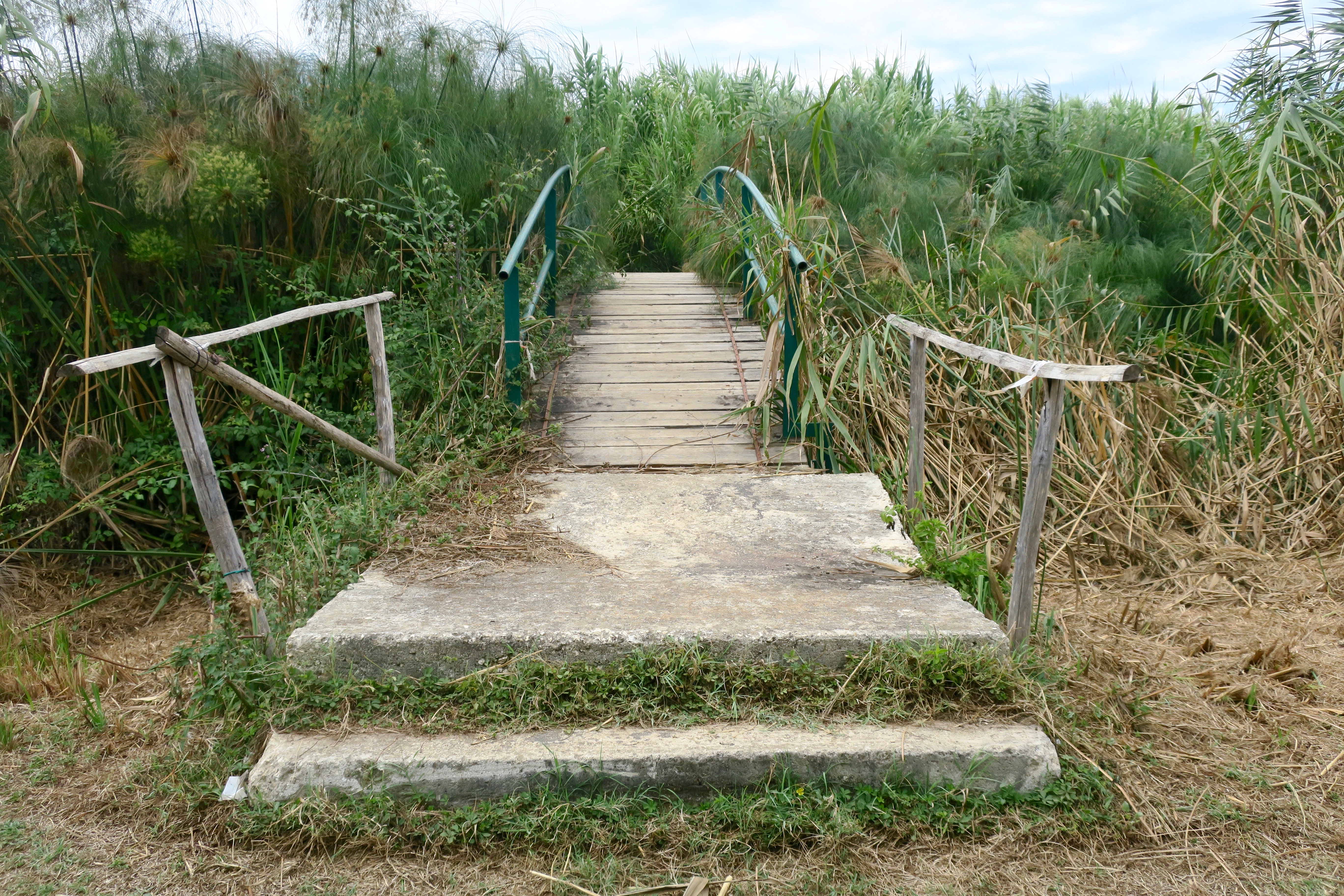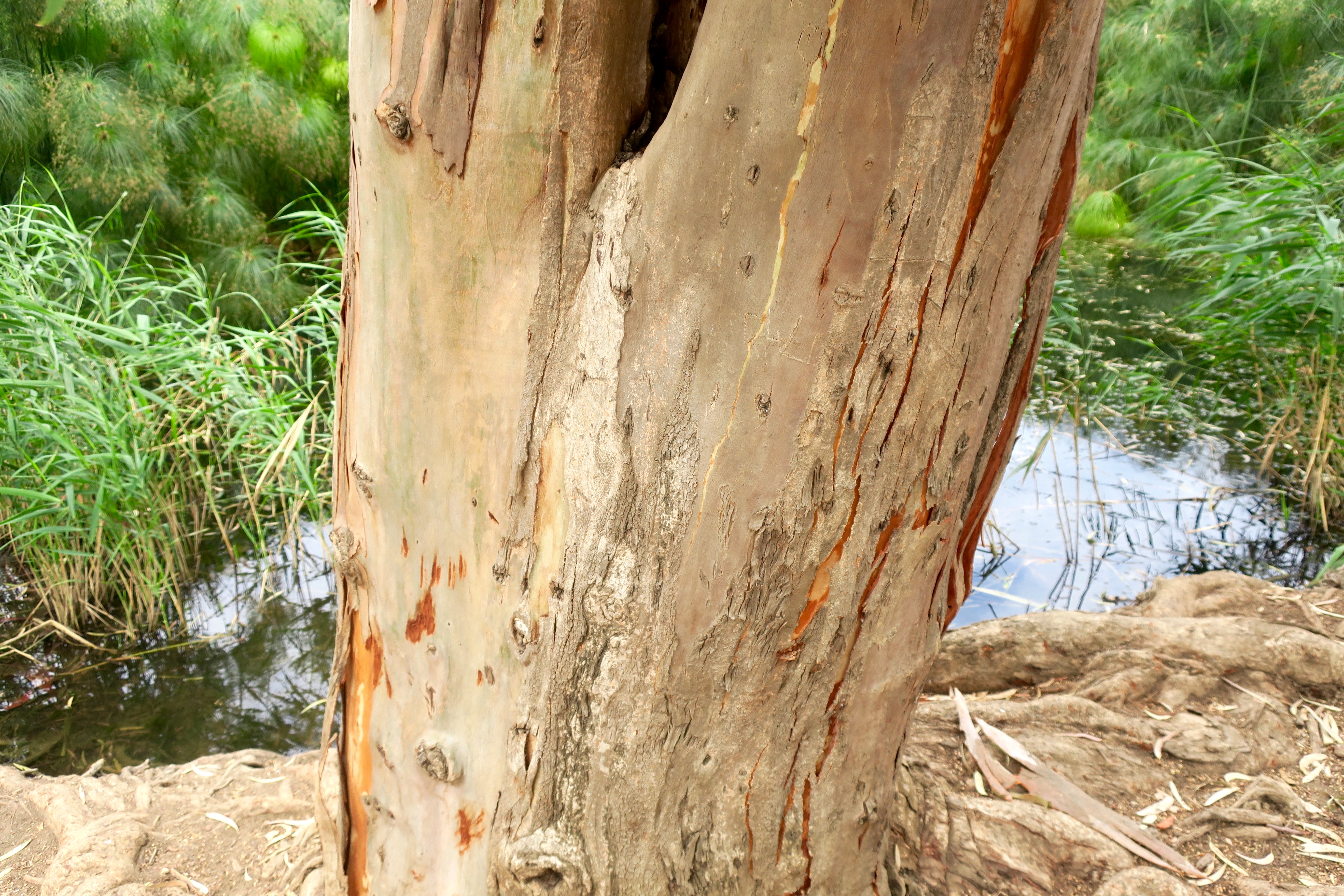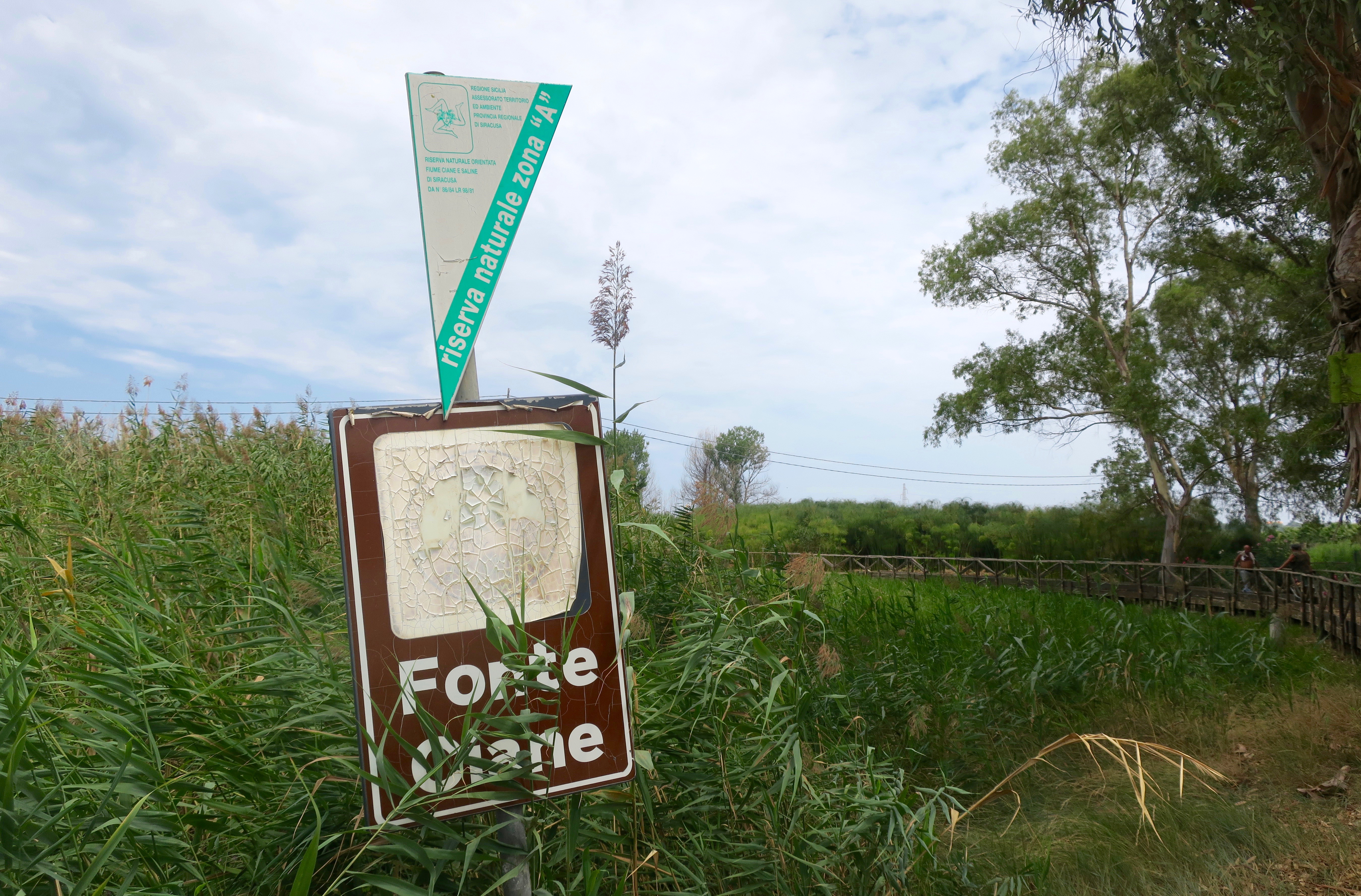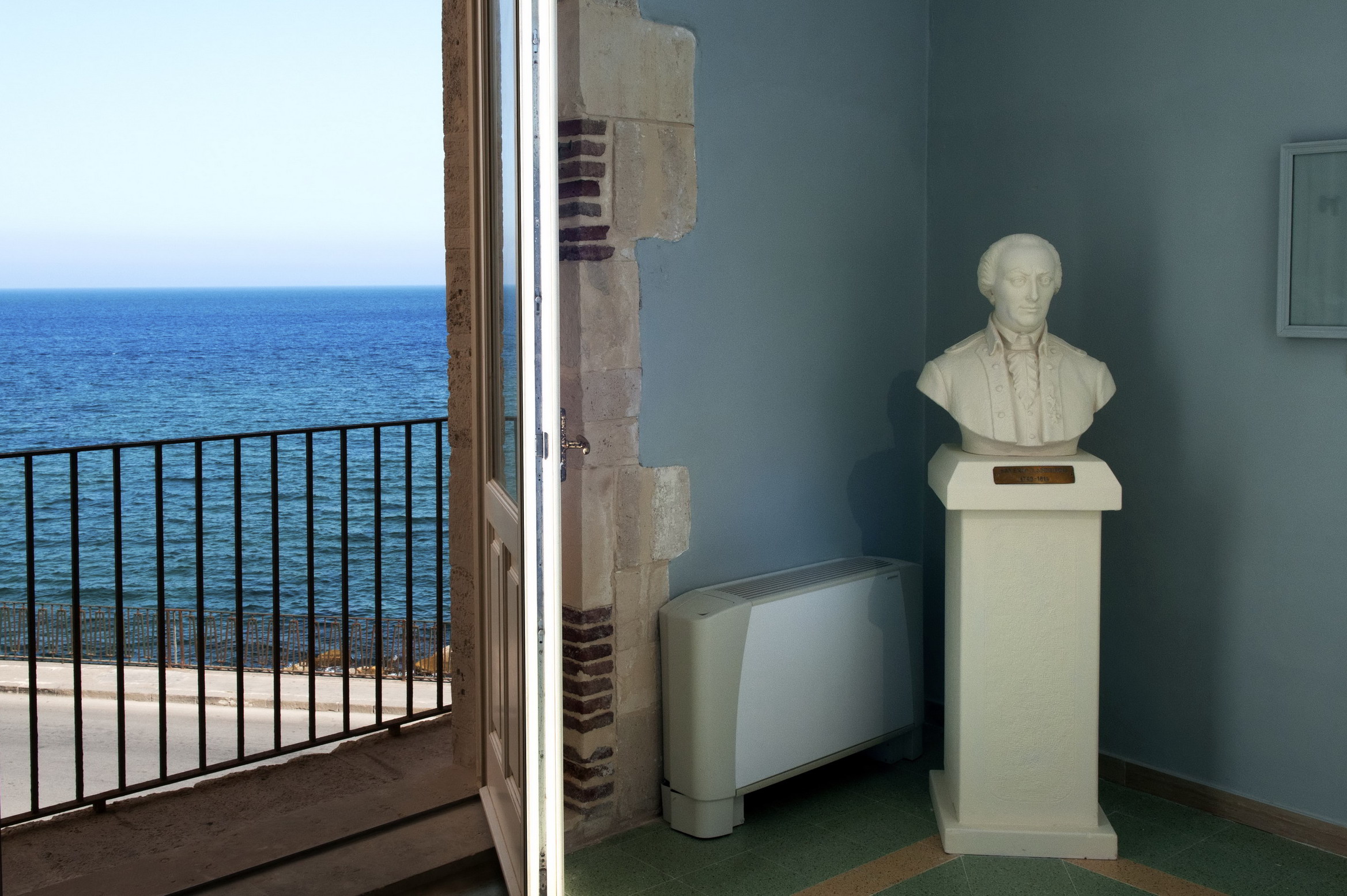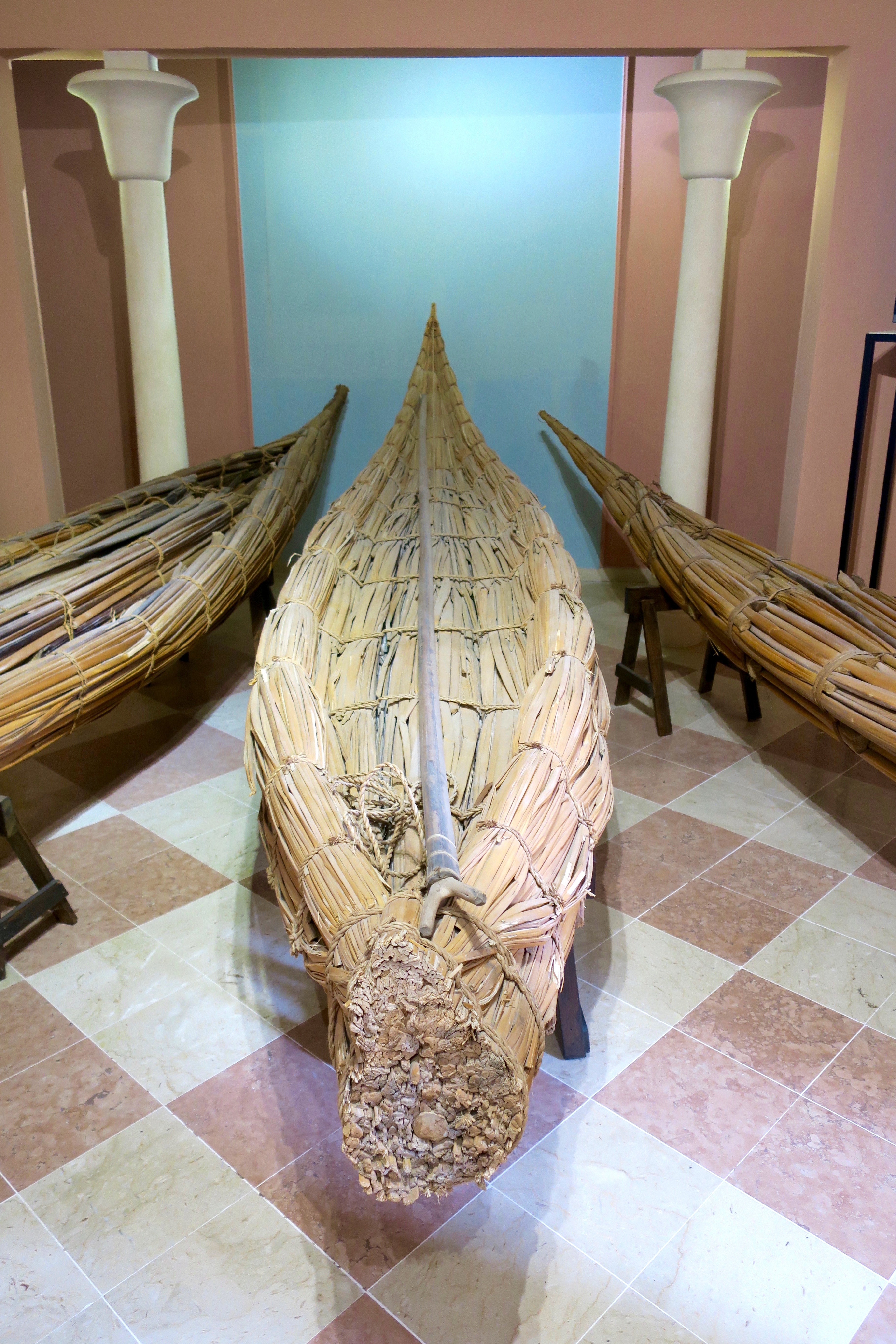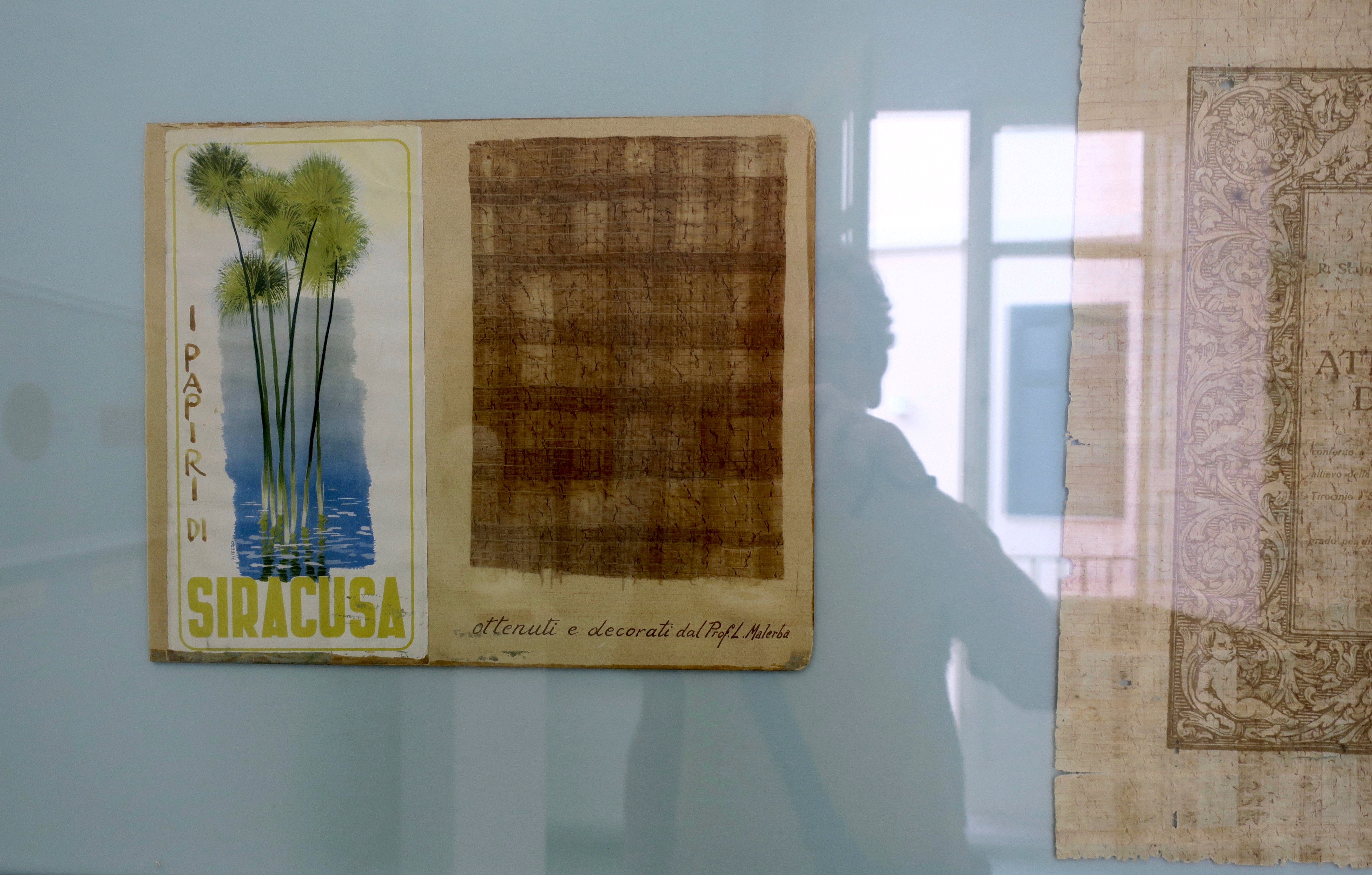Two days on the island was playing tricks with my head. Maybe it was the heat. But for our first outing we escaped the endless tourist stroll around the streets of Ortigia and headed for Fonte Ciane, and the promise of a gentle walk upstream along the banks of the river to its source. No more aimless wandering, now we had a goal, what could be more simple? The directions were straightforward, it was listed in all the guidebooks, we crossed over to the mainland and followed the signs.
We left the car in a grove of eucalyptus trees.
The riverbed was dry.
But the pond was full.
The sign on the wall was hidden in the shadows – Fiume Ciane Sentiero (Ciane River Trail).
So we set off along the path. We had left Ortigia but we hadn’t escaped the heat. It was midday and the sun was blazing. Our main focus was to find the next shade, but we couldn’t ignore the papyrus.
It grows here along the riverbank in great profusion, but only here and nowhere else in Europe.
I love its froth and filigree and green fireworks explosions.
Before long we came to a bridge, a place to rest awhile in the shade, where lizards cross the river.
A sign below the bridge – Fonte Ciane 400m – points back in the direction we’ve just come from.
We loop back and around following a path through the bamboo to nowhere.
An inconspicuous place where a few lost stones mark the dried up source of the Ciane River.
It seemed a disappointing tourist attraction.
We returned to the bridge and saw a trickle flowing beneath. Where did it come from?
We follow the trickle downstream.
Every tree is a friend, sharing its shade.
Look closely and there’s a red dragonfly.
The river is growing bigger but it’s hidden from view by the forest of papyrus. Squeaks and flutters come from within, splashes and croaks of invisible creatures. Sometimes, from the bamboo, small birds appear and disappear but too quickly to name them. Further away, egrets keep an eye on us.
We kept thinking that soon we would arrive back where we started from. I’m not sure why we thought this, but as we realised that the river was becoming wider and less and less like the dried-up riverbed we’d seen at the beginning, the more obvious it became that we should turn back. But we carried on.
The trees were inviting and there was always the hope that we might cross the next bridge.
Flowers on the hillside blooming crazy
Crickets talking back and forth in rhyme
Blue river running slow and lazy
I could stay with you forever and never realize the time
But the bridges were either broken and closed or a gateway into an impenetrable forest of papyrus.
So we turned back and retraced our steps to the bridge we’d crossed an hour or so earlier, where we’d wandered in hot perspiring circles to discover a few dry stones where the source of the river ought to be. We crossed over and passed the sign – Fonte Ciane 400m – and walked back the way we’d come, approximately 400m to the car, parked in the grove of eucalyptus trees beside the famous blue pool.
Fonte Ciane
How could we be so stupid? We’d come looking for the source of the river only to find it when we got back to the place we’d started from. Fonte Ciane. Cyan is synonymous with Aqua. I should’ve known.
Fonte Ciane. I bent down for a closer look and a frog jumped into the aqua pond, from where the river springs forth and loses itself among the papyrus, and would lose us if we ever presumed to follow it.
The Fonte Ciane, source of the river and now a nature reserve, is reached by turning off the Canicattini Bagni road. After crossing the Anapo, a byroad leads for 3km through a fertile valley with orange and lemon groves and magnificent old olive trees. Beyond a tributary of the Ciane, a road continues left to end in a grove of eucalyptus and cypress trees beside the romantic spring (the ancient Cyane), overgrown with reeds and thick clumps of papyrus. This plant grows only here and along the River Fiumefreddo in Sicily, and in no other part of Europe. The name of the spring (meaning blue in Greek) describes the colour of its waters, but a myth relates how the nymph Cyane, who tried to prevent Hades from carrying off Persephone, was changed into a spring and condemned to weep forever.
Blue Guide Sicily: Ellen Grady
※
Back in Ortigia it seemed like a good time to visit the Museo del Papiro, housed in a former convent just down the road from where we were staying.
The Museo del Papiro, founded in 1987 by Corrado Basile and Anna Di Natale, contains a rich collection of material relating to the creation and use of the papyrus plant in the ancient world.
Samples of papyrus from around the world.
On the River Ciane in 1960.
Corrado Basile, the founder of the Papyrus Museum, is devoted to the study of ‘Cyperus papyrus’ both growing in its natural state and cultivated and to the collection of accounts on its uses among various populations. He has sailed up the Nile and crossed Lake Chad to study the origin of the plant and the rate of growth in different environmental conditions, conducting exchanges of scientific interest with international institutions. In the role of expert in his field, he has been invited by the governing authorities and by the university institutions of Kenya, Sudan, Ethiopia and Egypt to give technical advice on ‘Cyperus papyrus’. During his study and research trips in Africa he has collected a number of items made from papyrus, among which are three examples of boats which are today exhibited in the Papyrus Museum.
Corrado Basile has also dedicated much time to the historical study of papyrus, with particular attention to the history of the plant in Sicily and to the enhancement and safeguard of the colony of ‘Cyperus papyrus’ and of the river environment of the Ciane River, and also of the papyri of the Arethusa Spring (Siracusa).
Pharaonic papyrus (15th century BC)
The papyrus plant grows in its wild state in the great fluvial basins in the African continent (Zambezi, Congo, Nile, from the Sudan and Ethiopia to Lake Victoria, where it has its greatest concentration), in Nigeria and Cameroun, in Lake Chad, the Canary Islands, Madagascar and the Mascarena Islands. It is in the tropical area that the species had its origin and from there it spread into other zones, among which Egypt – particularly in the Delta and the Fayyum, where it was cultivated with great care from ancient times on – Syria, Palestine, and Mesopotamia; moreover, the plant grew on the Island of Malta and grows, till now, in India, Sri Lanka and Sicily.
Papyrus in Sicily – The papyrus plant is present along the banks of the Ciane river, a few kilometres from Siracusa, representing in such a way the most extensive colony of ‘Cyperus papyrus’ in Europe. Another papyrus colony, but smaller and in the natural state, is localised in the neighbourhood of Fiumefreddo di Sicilia (Catania). Most writers believe papyrus to be of cultivated origin; for many of them, the plant was introduced in Sicily from Egypt in the III century BC, sent by Ptolemy II Philadelphus to Hieron.
In the past, the plant was present in many areas; it grew in Palermo (until the XVI century) and also in other localities in the Palermo area, on the eastern side of Sicily (from the river Alcantara, Fiumefreddo, Mascali to Giarre) and on the southern side (Ispica).
In the Siracusa district papyrus was first identified in 1674 in the peninsula of Maddalena.
The first information about the papyrus plants growing in the Ciane river is in a letter dated 26 March 1760, written by Abbot Salvatore Di Blasi to the Syracusan scholar Cesare Gaetani della Torre. Di Blasi thanks Gaetani for the beautiful trip along the river in order to see the papyrus plants.
From the second half of the XVIII century, the papyrus plants of the Ciane river became one of the local curiosities for travellers and scholars who stayed in Siracusa.
※
※
Papyrus on the River Anapo: Gabriel Carelli


